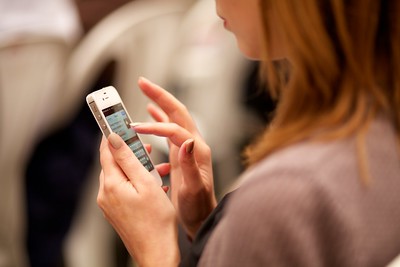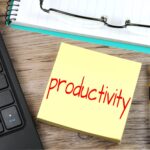 In today’s environment of constant connectivity, we routinely slog through multiple tasks in a single session.
In today’s environment of constant connectivity, we routinely slog through multiple tasks in a single session.
Blinking notifications pull us away from whatever we had been doing to something more pressing.
We surf the web by opening up multiple browser tabs and scrolling back and forth between various articles, email accounts, social media streams and other types of content.
Even when we’re working on something important, it’s likely that we have a supplementary activity in the background.
Some might say they are multitasking, a productive and socially-respected practice (even though research instead shows it has disastrous consequences for our productivity), but it’s really not. More often we are mindlessly shifting from task to task, either seeking novelty or fighting boredom.
It turns out there’s a term for this particular type of distraction: continuous partial attention.
Continuous partial attention is defined as “paying simultaneous attention to a number of sources of incoming information, but at a superficial level.”
Interestingly, the term significantly predates the world of social media and smartphones, as it was coined by Linda Stone in 1998.
Steven Johnson, an author whose books explore issues in technology and neuroscience, describes the process well:
“It usually involves skimming the surface of the incoming data, picking out the relevant details, and moving on to the next stream. You’re paying attention, but only partially. That lets you cast a wider net, but it also runs the risk of keeping you from really studying the fish.”
Continuous Partial Attention vs. Multitasking
Stone says Continuous Partial Attention is fueled by a desire to “live on the network” and stay on top of everything in a frantic 24/7 world, an idea reminiscent of the concept of “FOMO (fear of missing out)” which is often associated with social media.
The primary driver of Continuous Partial Attention is not the desire to be more productive, but rather to try and stay on top of everything. Stone says that “with every opportunity we ask, ‘What can I gain here?'”
But how, exactly, do we reconcile this with the related but distinct idea of multitasking?
The key to productive multitasking has to do with the type of demands required by the activities. If they require little cognitive power and are largely automatic, multitasking is great. Think of folding laundry while watching a TV show. Your folding is not suffering due to the additional activity and you are still able to follow the story arc of your show closely.
But when multiple tasks requiring conscious brain power are done simultaneously, our performance suffers greatly. Applying this to Continuous Partial Attention and the digital realm, CPA can be beneficial or not, and it often relies on your personal workflow and specific activities.
Scanning a social media feed doesn’t require much cognitive power, for example, if you are simply looking for interesting content or conversations to join.
If you have a system set up where you mark interesting things for later when you can devote your full attention (such as Evernote or Pocket), this initial “seek and identify” task can be done with multiple sources simultaneously without worry. Or you could even combine it with a cognitively-demanding task and the latter probably won’t suffer.
But if you’re both trying to identify and also read and learn from useful articles from Twitter while also checking and responding to email and monitoring your phone, you’re not going to get much done, or at least retain a whole lot.
Be sure to keep your comparatively mindless scanning to a “seek and identify” role, limited by a particular period of time, and leave the more substantive reading and responding for their own dedicated time periods, at which point you turn off notifications and stop looking for more.
Ultimately you will gain more from this deliberate strategy compared to desperately trying to do it all at once.




Leave a Reply